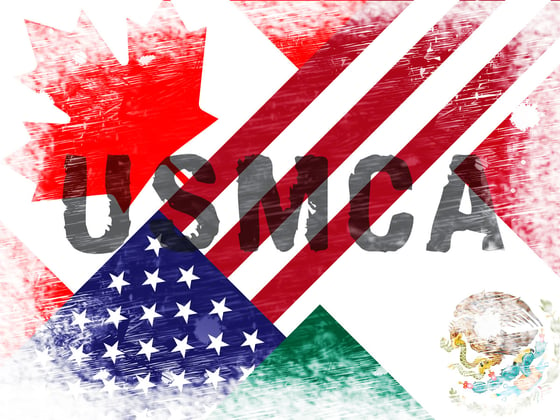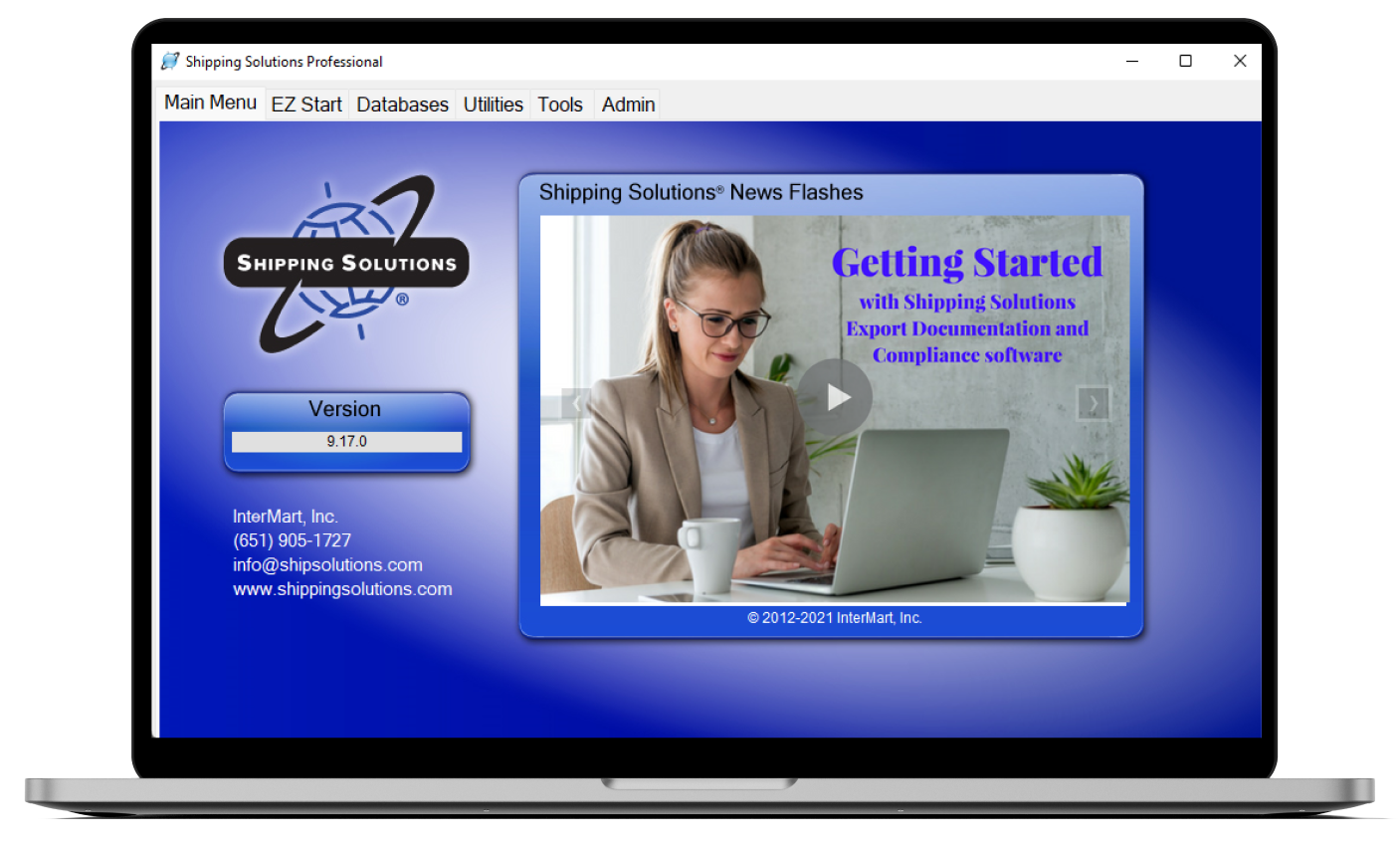The International Trade Blog Export Forms
Preparing for USMCA: 6 Steps for Importers and Exporters
On: June 10, 2020 | By:  David Noah |
7 min. read
David Noah |
7 min. read
 On April 24, 2020, the U.S. Trade Representative announced that the United States-Mexico-Canada Agreement (USMCA) will enter into force and replace NAFTA on July 1, 2020. In this announcement, the Trade Representative said this new free trade agreement will provide "significant improvements and modernized approaches to rules of origin, agricultural market access, intellectual property, digital trade, financial services, labor, and numerous other sectors."
On April 24, 2020, the U.S. Trade Representative announced that the United States-Mexico-Canada Agreement (USMCA) will enter into force and replace NAFTA on July 1, 2020. In this announcement, the Trade Representative said this new free trade agreement will provide "significant improvements and modernized approaches to rules of origin, agricultural market access, intellectual property, digital trade, financial services, labor, and numerous other sectors."
While the new agreement is no surprise, the timing of its implementation caught many companies off guard coming in the midst of a pandemic and economic turmoil. These companies are now rushing to prepare for July 1.
I spoke with Olga Torres, managing member of Torres Law PLC and a frequent speaker about USMCA, about what companies need to do to prepare.
1. Review Your Old NAFTA Certificates of Origin
Torres advises that the best place to start preparing for USMCA is to review your old NAFTA Certificates of Origin and the country of origin analysis you previously did for NAFTA. You will need to review the new USMCA rules of origin to see what changed and assess the impact for your products.
Just because one of or more of your products may have qualified under NAFTA doesn't automatically mean they qualify under USMCA. You need to renew Annex 4-B of USMCA to determine if they still qualify. This is a technical and possibly complex analysis, but reviewing the supporting documentation and analysis you did under NAFTA will help facilitate this review.
If your company hasn't kept records to support previous NAFTA claims—or worse, just made assumptions that your goods qualified—you will need to start from scratch. Remember, it's the responsibility of the party filling out and signing a certificate of origin to be able to prove that the goods qualify under the terms of the free trade agreement. If you can't prove it, you shouldn't claim it.
2. Determine Who Will Provide the Certificate of Origin
Under USMCA, importers are now able to certify that the goods qualify. However, it's usually the exporter or the producer of the goods who has enough information to make that certification. The USMCA requires the certificate of origin to clearly identify which of the three parties is completing the certificate.
It's important that the parties to the transaction agree upon who will fill out the certificate and the form it will take. This includes setting an expectation for the type of documentation the certifying party maintains—and for how long—in support of the agreement.
While the appearance of the NAFTA Certificate of Origin was defined in the agreement and the responsibility of the exporter, the USMCA has no official template that must be used. Instead, the Annex 5-A of the USMCA outlines the minimum data requirements that must be included with certification, including some additional requirements for the importer.
Whoever ends up doing the certification should make sure they review this Annex to ensure they meet these minimum requirements. They must also plan to save all documentation they used to prepare the certification for at least five years from the date of import.
While it's expected that most companies will use some version of a certificate that looks similar to the old NAFTA Certificate, you cannot just use the NAFTA form. If you do, your claims will almost certainly be rejected because, among other reasons, it doesn't include the minimum data fields specified in the USMCA.
3. Assess the Impact of the USMCA Changes
Certain parts of the USMCA include more significant changes from NAFTA than others, so not all companies and industries will be impacted the same. If you determine your goods no longer qualify, are there changes in how you source materials for your goods that will help them qualify? Can you move parts of your production process back to North America in order to qualify?
On the flip side, there will be cases that goods did not qualify under the terms of NAFTA but may now qualify under USMCA. This is another case where reviewing the documentation of your previous NAFTA product review process may yield positive results.
Keep in mind that USMCA is a voluntary program. There is more to determining the benefit of the agreement to your company than just the amount of duty that you or your customers pay.
You may need to invest a lot of effort to determine whether your goods qualify under USMCA or spend a lot of time and money to adjust your sourcing and/or manufacturing processes to comply. In addition, conforming to the new rules of origin will probably require changes to your accounting or ERP system, updates to company procedures manuals, retraining of employees, more complicated customer or vendor negotiations, and many other changes. Not all companies will decide it's worth the effort.
4. Identify Strategies That Lessen the Impact of the Changes
In addition to addressing specific types of products, USMCA includes other new or revised provisions that may make qualifying your goods easier to do. For example, the agreement increases the de minimus amount from seven to 10 percent when determining origin. That means that if non-originating parts of a good represent no more than 10% of the total value of the goods, they may now qualify as long as they satisfy all the other terms of the agreement.
It's important that your company review and evaluate these types of changes included in USMCA. They could make the difference of whether your goods qualify.
5. Update Manuals and Procedures
Torres recommends approaching USMCA from the perspective of having to defend your determination that your goods qualify in an audit. That means not just maintaining a record of where all the goods originate, but a detailed description of your sourcing, production and determination process that would allow an auditor to clearly see that the goods qualify.
It's a common best practice for companies to create written manuals that document this process. Typically, companies have a general import manual that addresses the company’s policy on claiming free trade agreements as part of many other customs compliance areas. If they use NAFTA, they have a NAFTA chapter in their import manual; it varies by company.
These companies then often have a desktop-level procedures manual that provides more specific guidance to employees on completing certificates of origin. Regardless of the format, these policies and procedures should outline what documentation should be maintained, for how long, what kind of support is required for country of origin analysis, who is responsible for what at the company, and other important information.
If your company has already created these written procedures for NAFTA, you can adjust them for USMCA. If not, you should start from scratch. An investment up front in creating a set of procedures manuals can save you significant headaches—and money—down the road.
6. Review Your Contract Terms
Your company almost certainly has agreements in place with your vendors and customers that outline the duties and responsibilities when doing business with them. Now is the time to review those agreements and make any necessary adjustments to comply with USMCA.
As I noted earlier, you want to identify who is responsible for determining eligibility under USMCA, how they will document that determination, and the format in which they will certify the goods qualify by most likely using a USMCA Certificate of Origin.
In addition, when dealing with a vendor, you may want to include the ability to audit their records in order to ensure compliance. You may also want to ensure that your Mexican suppliers are complying with the new labor requirements outlined in Chapter 23 of the agreement.
Torres points out that under Chapter 23, private companies in the U.S. can make claims against companies in Mexico that they believe aren't following the minimum standards for working conditions, prohibitions against child labor, and many other requirements. She says that under USMCA, labor lawyers may be a critical resource for ensuring compliance with the agreement.
Refunds of Duties
While some people may be anxious about the fast-approaching July 1, 2020 implementation date, keep in mind that under the terms of USMCA, the importer has up to a year to make a claim for preferential duty treatment. In that case, customs will refund the amount of any duty paid. Just don't count on a speedy refund!
Also remember that while the Merchandise Processing Fee (MPF) in the U.S. is waived if you make your claim at the time of import, it will not be refunded. While the MFP ranges roughly between $25 and $500 per import, for some importers that can add up to a significant amount of money.
Additional Resources
- NAFTA vs. USMCA: The North American Free Trade Agreement and the U.S.-Mexico-Canada Agreement.
- USMCA: The Modernized NAFTA webinar.
- Download the free USMCA Certificate of Origin template.
- Shipping Solutions export documentation and compliance software makes it easy to complete a USMCA Certificate and more than two dozen other standard export forms. Request a free online demo.
Thank you to Olga Torres, managing member of Torres Law PLC, for her assistance with this blog post. Go to www.torrestradelaw.com or email info@torrestradelaw.com for more information.
Like what you read? Join thousands of exporters and importers who subscribe to Passages: The International Trade Blog. You'll get the latest news and tips for exporters and importers delivered right to your inbox.

About the Author: David Noah
David Noah is the founder and president of Shipping Solutions, a software company that develops and sells export documentation and compliance software targeted at U.S. companies that export. David is a frequent speaker on export documentation and compliance issues and has published several articles on the topic.



